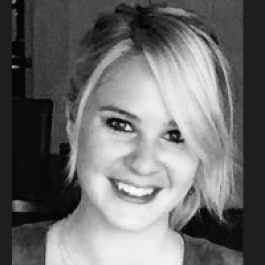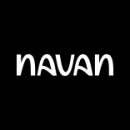Closing a deal is only half the battle for sales professionals and marketers. The other half? Finding prospects. According to research by HubSpot, 61 percent of marketers say generating leads is their toughest challenge.
For Senior Account Executive Bryana Georgakas, lead gen means optimizing opportunities at Quantcast, an audience intelligence and measurement company. When the company’s CEO presented at the marketing conference IAB NewFronts, for example, the marketing team was able to generate leads by providing customer value with leadership insight and free trials. After receiving positive reviews from attendees, Georgakas’s team published a CTO-led webinar online and armed salespeople with marketing white papers to garner awareness. Just from that single event, she said leads are still coming in.
Seeking opportunities also applies to the cold-calling world. Daniella Schuh, a senior enterprise SDR at business travel platform Navan, engages in active listening during her cold call sprints. She said each call is an opportunity to learn a different approach or strategy that she can later implement.
Once the lead is generated, Georgakas and Schuh stay involved in the prospect funnel. Whether it’s a close or a win, measuring each lead’s outcome provides valuable insight to generate future success.
Senior Account Executive Bryana Georgakas said the best approach to lead generation is multifaceted, provides customer value and generates market buzz. At Quantcast, an audience intelligence and measurement company, lead quality is gauged by data quality and internal scoring, and marketing and sales collaborate closely to turn leads into new business.
What’s the most effective lead generation strategy you’ve tried?
Lead generation is a commitment to listen to the market and an obsession with understanding customer’s needs. Recently, our CEO presented at IAB NewFronts on changing the pulse of consumer behavior over a 12-week span during the COVID-19 pandemic. This gave us a unique opportunity to provide value to potential customers by showcasing how our deep level of insight into live audience behavior can power their strategy and innovation and offer a free trial of our interactive insights tool, Audience Planner.
If the story ended there, we would have generated a fair amount of leads but would have missed out on a larger opportunity. Instead, we heard the excitement from our customers and we jumped on it. Our insights team had been at the ready with packageable insights by vertical; our CTO held a webinar deep-diving into the changing consumer mindset; and the marketing team armed sales with recordings, white papers and leave-behinds to go to market. The leads are still rolling in. The best advice I can offer is to listen and provide value, act quickly and iterate often. And then the real work begins.
Without proper measurement, even the best lead-gen strategies can fail.”
How do you gauge the quality of the leads you’re generating? What CRM technology are you using to capture this data?
Without proper measurement, even the best lead-gen strategies can fail. We use Salesforce because of the integrations with Marketo, LinkedIn and LeanData. For us, the lead qualification process starts with data quality tools and ultimately ends with our sales team. Once our data quality tools first remove fraudulent leads, we calculate scores for each lead based on the types and number of actions a lead has taken, the lead title and the size and earnings of their associated company.
From there, our marketing and demand gen teams further qualify the lead and assign it to the proper sales teams. Sales also must accept the lead in Salesforce after their initial conversation so we can ultimately track them through the deal cycle.
How do you work with the sales team to convert leads and refine your lead generation strategies over time?
It comes down to communication, collaboration and iteration. Before we generate content, we first collaborate with the sales team to understand market trends and topics our customers care about. Once we go to market, we’re able to track when a lead goes from a marketing qualified lead (MQL) to a sales accepted lead (SAL) or is recycled to understand the quality of leads coming from each campaign strategy. If there are a large volume of recycled leads, we lean on feedback from the sales team to understand what disqualified them and either refine the approach from there or put it to bed. If there are a large number of SALs that don’t convert into customers, we collaborate on new strategies or collateral that could spark interest with them once more. To generate demand in the ever-changing media industry, the feedback loop between demand gen and sales is essential. We must work as one to find success.
Daniella Schuh, a senior enterprise SDR, said an effective cold-calling strategy involves active listening. This practice helps her develop different approaches and strategies to generating new prospects, which she then shares with other SDRs at business travel platform Navan.
What’s the most effective lead generation strategy you’ve tried? Why did you decide to test this approach and what were the results?
Most of the meetings I generate start with LinkedIn. I’ve leveraged LinkedIn to research companies and potential prospects and build relationships by engaging with their posts and articles to better understand them and create warmer connections.
Cold-calling is a huge part of our role as SDRs. During our team cold-calling sessions, I also play an active listening role to learn from the different approaches and strategies we use in our conversations to implement them in my future calls.
How do you gauge the quality of the leads you’re generating? What CRM technology are you using to capture this data?
I gauge the quality of leads I generate by looking at the company and persona I schedule meetings with. If it’s an ideal customer profile (ICP), recognizable logo or a larger company (or even better, a trifecta of all three), I consider it a win for myself. When crafting my lead generation strategy, I like to target C-level executives, VPs and directors in finance or procurement. It’s very important to build rapport from the start with the right leaders to get buy-in.
We use Salesforce and it’s rewarding to see my leads move through our sales funnel and ultimately to “close-won.” There’s a learning culture here to leverage these deals, closed or not, to better understand what worked and what didn’t to iterate on my strategy and improve.
I work closely with AEs to prepare and share as much context as possible before the calls I schedule for them.”
How do you work with the sales team to convert leads and refine your lead generation strategies over time?
I work closely with AEs to prepare and share as much context as possible before the calls I schedule for them. I usually create a detailed and organized pre-call document and schedule one-on-one time with them to make sure we have full alignment. This has been effective in bridging the gap and ensuring a warm introduction between the prospect and AE. This step has been very important because it helps the AE deliver the most value based on the customer’s needs and pain points.
With the other SDRs on my team, we are constantly sharing ideas and wins with each other for continuous enablement and improvement. It’s a true team effort with the camaraderie and supportive culture of our team.








